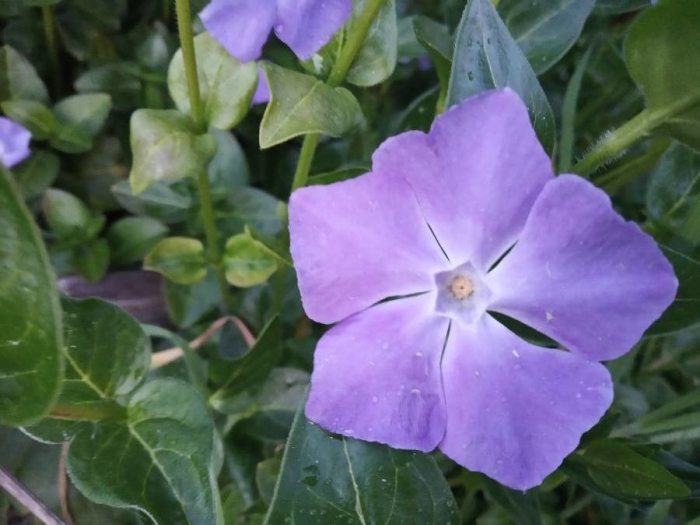Bigleaf Periwinkle
(Vinca major)
Bigleaf Periwinkle (Vinca major)
/
/

antoni puiggros
CC BY-SA 4.0
Image By:
antoni puiggros
Recorded By:
Copyright:
CC BY-SA 4.0
Copyright Notice:
Photo by: antoni puiggros | License Type: CC BY-SA 4.0 | License URL: https://creativecommons.org/licenses/by-sa/4.0/ | Attribution: antoni puiggros (cc-by-sa) | Rights Holder: antoni puiggros | Publisher: PlantNet | Date Created: 2019-04-07T20:24:08Z | Title: Vinca major L.: flower | Notes: Vinca major L.: flower |







































































































Estimated Native Range
Summary
Vinca major, commonly known as Bigleaf Periwinkle, is an evergreen perennial vine or herb, originally from the Mediterranean and West Asia, where it thrives in woodland areas, forest clearings, and along riverbanks. It typically grows to 25 cm (10 in) tall with a spread that can be indefinite, as it roots along stems to form extensive mats of groundcover, each 2–5 m across, and scrambles up to 50–70 cm high. Its leaves are glossy and ovate, and from spring to autumn, it produces large, showy, violet to purplish flowers that are highly ornamental.
Bigleaf Periwinkle is valued for its lush foliage and vibrant flowers, which make it a popular choice for groundcover, erosion control, and as an ornamental vine in temperate gardens. It is also used to cover unsightly areas or to plant under trees where grass might struggle to grow. This plant prefers moist, well-drained soils and can tolerate a range of light conditions, from full sun to part shade. While it is drought-tolerant once established, it benefits from regular watering during prolonged dry periods. However, gardeners should be cautious as Vinca major can become invasive, particularly in regions with mild winters, and it may outcompete native vegetation.CC BY-SA 4.0
Bigleaf Periwinkle is valued for its lush foliage and vibrant flowers, which make it a popular choice for groundcover, erosion control, and as an ornamental vine in temperate gardens. It is also used to cover unsightly areas or to plant under trees where grass might struggle to grow. This plant prefers moist, well-drained soils and can tolerate a range of light conditions, from full sun to part shade. While it is drought-tolerant once established, it benefits from regular watering during prolonged dry periods. However, gardeners should be cautious as Vinca major can become invasive, particularly in regions with mild winters, and it may outcompete native vegetation.CC BY-SA 4.0
Plant Description
- Plant Type: Vine, Herb
- Height: 0.5-1.5 feet
- Width: 1-2 feet
- Growth Rate: Moderate
- Flower Color: Blue, Purple
- Flowering Season: Spring
- Leaf Retention: Evergreen
Growth Requirements
- Sun: Full Sun, Part Shade
- Water: Low, Medium
- Drainage: Slow, Medium, Fast
Common Uses
Bank Stabilization, Bee Garden, Border Plant, Deer Resistant, Drought Tolerant, Erosion Control, Fire Resistant, Groundcover, Potted Plant, Rabbit Resistant, Rock Garden, Salt Tolerant, Showy Flowers
Natural Habitat
Woodland areas, forest clearings, and along riverbanks
Other Names
Common Names: Greater Periwinkle, Large Periwinkle, Blue Periwinkle, Big-Leaved Periwinkle, Large-Leaved Periwinkle, Großes Immergrün, Grande Pervenche, Grote Maagdenpalm, Stor Vintergröna, Vinca-Pendente
Scientific Names: , Vinca major, Vinca major var. oxyloba, Vinca minor subsp. major, Pervinca major,
GBIF Accepted Name: Vinca major L.